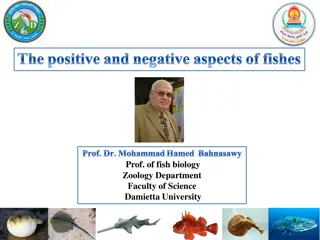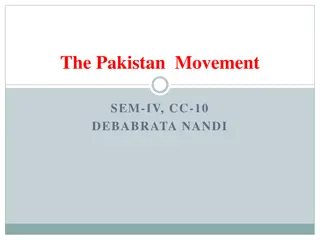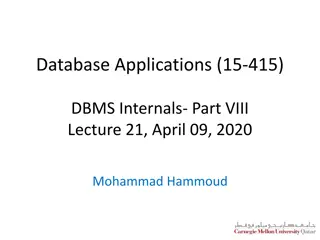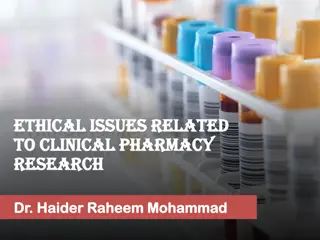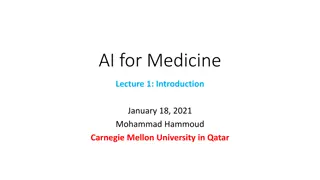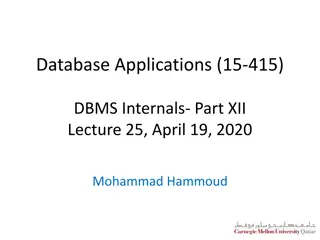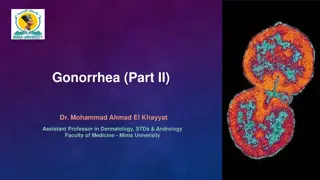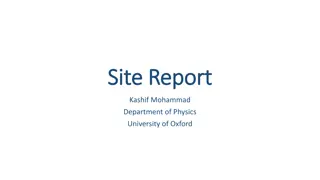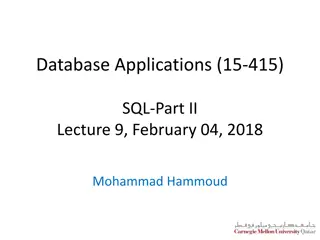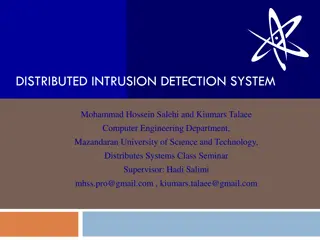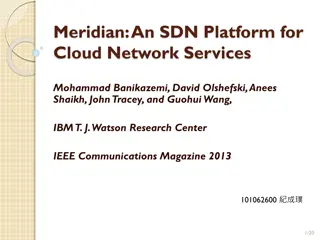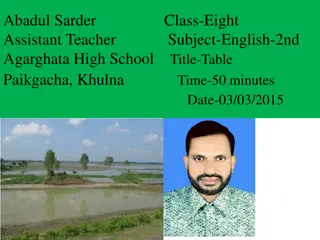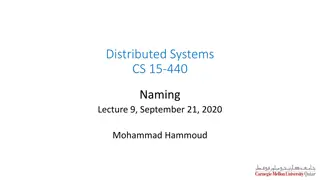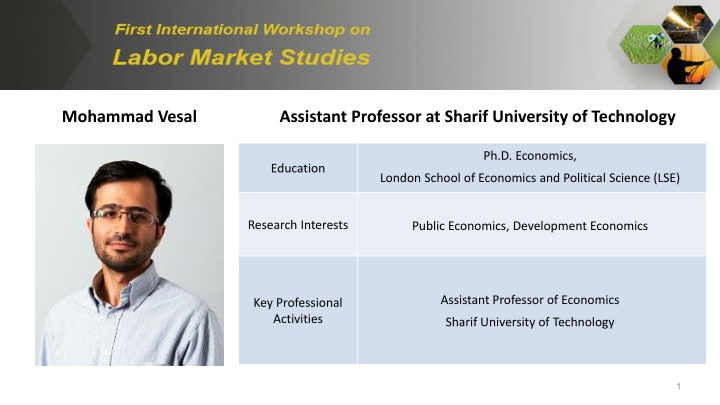
Role of Iran's Education System in Human Capital Formation
Explore the research work of Mohammad Vesal, Assistant Professor at Sharif University of Technology, focusing on the effectiveness of Iran's education system in enhancing skills, labor market outcomes, and barriers to skill formation. Discover insights into educational attainment, regional comparisons, and labor market challenges in Iran.
Download Presentation

Please find below an Image/Link to download the presentation.
The content on the website is provided AS IS for your information and personal use only. It may not be sold, licensed, or shared on other websites without obtaining consent from the author. If you encounter any issues during the download, it is possible that the publisher has removed the file from their server.
You are allowed to download the files provided on this website for personal or commercial use, subject to the condition that they are used lawfully. All files are the property of their respective owners.
The content on the website is provided AS IS for your information and personal use only. It may not be sold, licensed, or shared on other websites without obtaining consent from the author.
E N D
Presentation Transcript
Mohammad Vesal Assistant Professor at Sharif University of Technology Ph.D. Economics, Education London School of Economics and Political Science (LSE) Research Interests Public Economics, Development Economics Assistant Professor of Economics Key Professional Activities Sharif University of Technology 1
The role of Irans education system in human capital formation Javad Salehi-Isfahani Mohammad Vesal 2
Outline Outline Introduction Stylized Facts Conceptual Framework Higher Education TVE Reform policies 3 Sharif University of Technology M. Vesal, J. Salehi-Isfahani
Basic questions Basic questions Does education improve labor market outcomes? Probability of employment? Earnings? Is Iran s education system effective in enhancing skills? What are potential barriers to skill formation? What is the role of labor and education institutions? 4 Sharif University of Technology M. Vesal, J. Salehi-Isfahani
Outline Outline Introduction Stylized Facts Conceptual Framework Higher Education TVE Reform policies 5 Sharif University of Technology M. Vesal, J. Salehi-Isfahani
By and large Iran was successful in increasing By and large Iran was successful in increasing educational attainment educational attainment 6 Sharif University of Technology M. Vesal, J. Salehi-Isfahani
Even in a regional and global context Even in a regional and global context 7 Sharif University of Technology M. Vesal, J. Salehi-Isfahani
But achievement is lower than global average(500), and lower deciles are falling behind 8 Sharif University of Technology M. Vesal, J. Salehi-Isfahani
Labor market outcomes also disappointing: Higher and rising change unemployment for educated workers 9 Sharif University of Technology M. Vesal, J. Salehi-Isfahani
Declining share of public sector employment 10 Sharif University of Technology M. Vesal, J. Salehi-Isfahani
Convexity of returns to education 11 Sharif University of Technology M. Vesal, J. Salehi-Isfahani
Outline Outline Introduction Stylized Facts Conceptual Framework Higher Education TVE Reform policies 12 Sharif University of Technology M. Vesal, J. Salehi-Isfahani
A simple conceptual framework A simple conceptual framework How should we think about the process of human capital accumulation? Is there a model that could explain the stylized facts? Interaction of markets for Education and Labor Actors Individuals: How much to invest in human capital? Employers: What types of skills to demand and how to reward them? Educational institutions: What types of skills to supply? Ideally signals sent from employers to individuals and educational institutions coordinate actions. Educational institutions amplify labor market signals. 13 Sharif University of Technology M. Vesal, J. Salehi-Isfahani
Presence of market failures Presence of market failures Externalities: mostly in basic education Imperfect information: Employers have imperfect information about ability and skills of workers. education as a signal of innate ability. on-the-job training and screening. Workers lack knowledge of how education affects their employment prospects. Credit constraints: poor individuals cannot borrow to invest in human capital All these justify state intervention in both markets not just to alleviate market failures but also to increase equity and social mobility. 14 Sharif University of Technology M. Vesal, J. Salehi-Isfahani
State intervention in education and labor markets State intervention in education and labor markets in Iran in Iran State-led expansion of primary and secondary formal education. Free with near universal access at primary stage. Increasing role for private schools. State-led expansion of higher education. Good quality free public universities coexist with lower quality private universities. Historically the government was the main employer of graduates. Well-paid, secure jobs offered to those with acceptable credentials . A mandate to protect workers resulted in rigid labor regulations. Employers put greater weight on ex ante signals of quality: credentials. 15 Sharif University of Technology M. Vesal, J. Salehi-Isfahani
The The Credentialist Credentialist Equilibrium Equilibrium in Iran in Iran Competition to get credentials from good universities together with the 1980s baby boom led to rationing of university seats. Concour gained prominence as the screening mechanism. Focus on skills needed for concour. Labor market signals are distorted and masked. Those with good enough credentials get a job. The majority have invested in skills not needed by private employers. Government response to this was/is 1. Expand higher education. 2. Track out less able students to non-academic routes. 3. Give priority to university graduates in Active Labor Market Policies. 16 Sharif University of Technology M. Vesal, J. Salehi-Isfahani
Outline Outline Introduction Stylized Facts Conceptual Framework Higher Education TVE Reform policies 17 Sharif University of Technology M. Vesal, J. Salehi-Isfahani
The heavy weight of state in higher education The heavy weight of state in higher education Sluggish labor demand from the public sector increased market tightness for university graduates. Raised the bar in employment, ratcheting up demand to M.Sc. and Ph.D. Leading to further expansion of higher education. Competitive recruitment examinations! Leading universities are public and hence have poor incentives to engage with employers and almost all lack a career service unit! Radical expansion of B.Sc. and later M.Sc. resulted in a)deterioration quality, b)entry of less able students, c)higher reservation wages. Resources needed to survive in this competition is a killer of social mobility. 18 Sharif University of Technology M. Vesal, J. Salehi-Isfahani
Intense competition to enter university Intense competition to enter university 19 Sharif University of Technology M. Vesal, J. Salehi-Isfahani
Sharp increase in higher education Sharp increase in higher education 20 Sharif University of Technology M. Vesal, J. Salehi-Isfahani
Followed by sharp increase in post Followed by sharp increase in post- -graduate degrees graduate degrees 21 Sharif University of Technology M. Vesal, J. Salehi-Isfahani
Expansion mainly coming from Expansion mainly coming from private and distance learning universities learning universities private and distance 22 Sharif University of Technology M. Vesal, J. Salehi-Isfahani
A gentle rise in student to staff ratio in universities A gentle rise in student to staff ratio in universities 23 Sharif University of Technology M. Vesal, J. Salehi-Isfahani
Outline Outline Introduction Stylized Facts Conceptual Framework Higher Education TVE Reform policies 24 Sharif University of Technology M. Vesal, J. Salehi-Isfahani
Technical and Vocational Education Technical and Vocational Education Fragmented TVE system with Labour and Education ministries having their own systems. Public domination of curriculum design ignores business needs and trends. Poor career guidance and de facto selection based on academic record (not aptitude and interest) reinforce employer perceptions that TVE graduates are less able and less motivated. Most TVE graduates work in micro enterprises or remain self-employed. This reduces returns and job security. 25 Sharif University of Technology M. Vesal, J. Salehi-Isfahani
The work place The work place Public sector labor demand has been sluggish. Self-employment and micro enterprises are responsible for the bulk of new jobs. But these neither have the incentives nor the ability to engage with the education system. SMEs and larger enterprises are better off investing in rent-seeking than in establishing links with education entities. 26 Sharif University of Technology M. Vesal, J. Salehi-Isfahani
Outline Outline Introduction Stylized Facts Conceptual Framework Higher Education TVE Reform policies 27 Sharif University of Technology M. Vesal, J. Salehi-Isfahani
Coordinated education and labor market reform Coordinated education and labor market reform policies policies Create a coherent skill quality assurance system to improve information flows between employers and workers. Rank schools and universities according to job placement to create competition and better responsiveness to market signals. Pull out current form of government funding and move towards a pupil-linked funding format: school vouchers and student loans are some examples. Add a wider range of skills to concour: writing and listening. Removing numerical grades for the first four levels was in the right direction but the recent restructuring was not aimed at the right issues. Rigid labor laws weakens signals sent from private employers to students and educational institutions. 28 Sharif University of Technology M. Vesal, J. Salehi-Isfahani
Key questions to be answered Key questions to be answered What should the government do to promote employment of TVE and high school graduates? INSTEAD of What should the government do about high unemployment rate of graduates? How to deal with the current stock of graduates not to distort incentives for future students? Do not give priority to higher education over high school or TVE graduates. What is the best way to guide students to careers that suit them best? 29 Sharif University of Technology M. Vesal, J. Salehi-Isfahani

